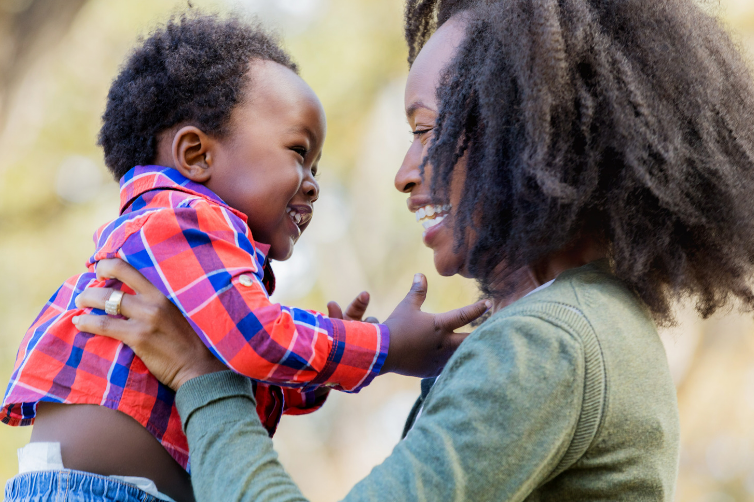Laying the Foundation for First Words

If you do a quick internet search, you’ll find many resources that offer parents ways to help children learn to talk. Most resources place a big emphasis on children’s first words and provide activities to encourage those first words.
But it’s not all about the words.
Learning to talk starts long before a child says their first words. In fact, there are many things a child needs to learn about in order to communicate with words. Here are some of the building blocks for words, and some tips for encouraging them with your child.
Making sounds
Children need to learn how to use their voice and mouth to make a variety of sounds before they learn to talk. This starts when they are infants when they coo and gurgle, and eventually they learn to babble strings of sounds like “ba ba ba".
Tip:
Copying your child’s sounds is a great way to encourage your child to vocalize more. After you copy your child’s sounds, pause and wait while looking at your child to see if they copy you back. This copycat game can be particularly fun to do in front of a mirror. You can also help your child notice the sounds you make by using “fun words”. These are words that have a natural sing-song melody, like “whoops!”, “uh oh”, or “wheee!” If you exaggerate these words, it might catch your child’s attention. Singing is another great way to help your child notice sounds. Sometimes children will try to babble along with a melody before they know the words.
Understanding
It’s impossible to use a word correctly if you don't know what it means. That’s why children generally understand several words before they start to talk.
Tip:
Build your child's understanding by showing them what words mean through your voice and actions. Point to or hold up objects as you talk about them so your child can connect the item with its name. Use other gestures to demonstrate word meanings, such as making your arms big when you say “It’s so big!” or gesturing for your child to come as you say “Come here please”. You can also use your voice to show what words mean, such as making your voice quiet as you say “Shhhh, the baby’s sleeping”. Repetition also helps children understand what words mean. The more children hear the same kinds of familiar words used in their everyday life, the more likely it is they will begin to understand what these words mean.
Using gestures
Before children say their first words, they usually learn to use some gestures, such as pointing to things that catch their attention, raising their arms to be picked up, and shaking their heads when they don’t want something.
Tip:
The best way to help your child learn gestures is to use gestures yourself. Just add gestures when you talk with your child, and you can also add a gesture when your child sends you a message. For example, if your child reaches for their cup on the counter and says “uhh”, you could point to the cup and say “Oh, you want your cup.” Not only will your child hear the word that matches their message, they’ll also see you pointing, and this might be something they will copy eventually.
Interacting
Being able to take turns back and forth during enjoyable interactions allows children to hear and learn language. These interactions teach children about how conversations work – long before they can talk. When children have fun interactions with their parents, they experience the back-and-forth nature of communicating, they pay attention to what their parents do and say, and they learn to share their interests.
Tip:
Following your child's lead is the easiest way to get an interaction going. If you observe your child’s interest and join in with what they are doing, your child will be motivated to share the moment with you and keep the interaction going. The more the interaction keeps going back and forth, the more opportunities your child will have to learn from you. It’s tempting to direct the interaction in an effort to teach your child new things, but they will learn more if you pause and wait to let them lead the interaction.
Learning to talk doesn’t happen overnight. You child needs to have these building blocks in place in order to learn to use words. By having enjoyable interactions during which you let your child lead, repeat important words, use gestures, and imitate your child’s sounds, you will pave the way for your child’s communication skills to grow.
Similar articles by tag:
Language Development | Early Vocabulary | Follow the Child’s Lead | Gestures
